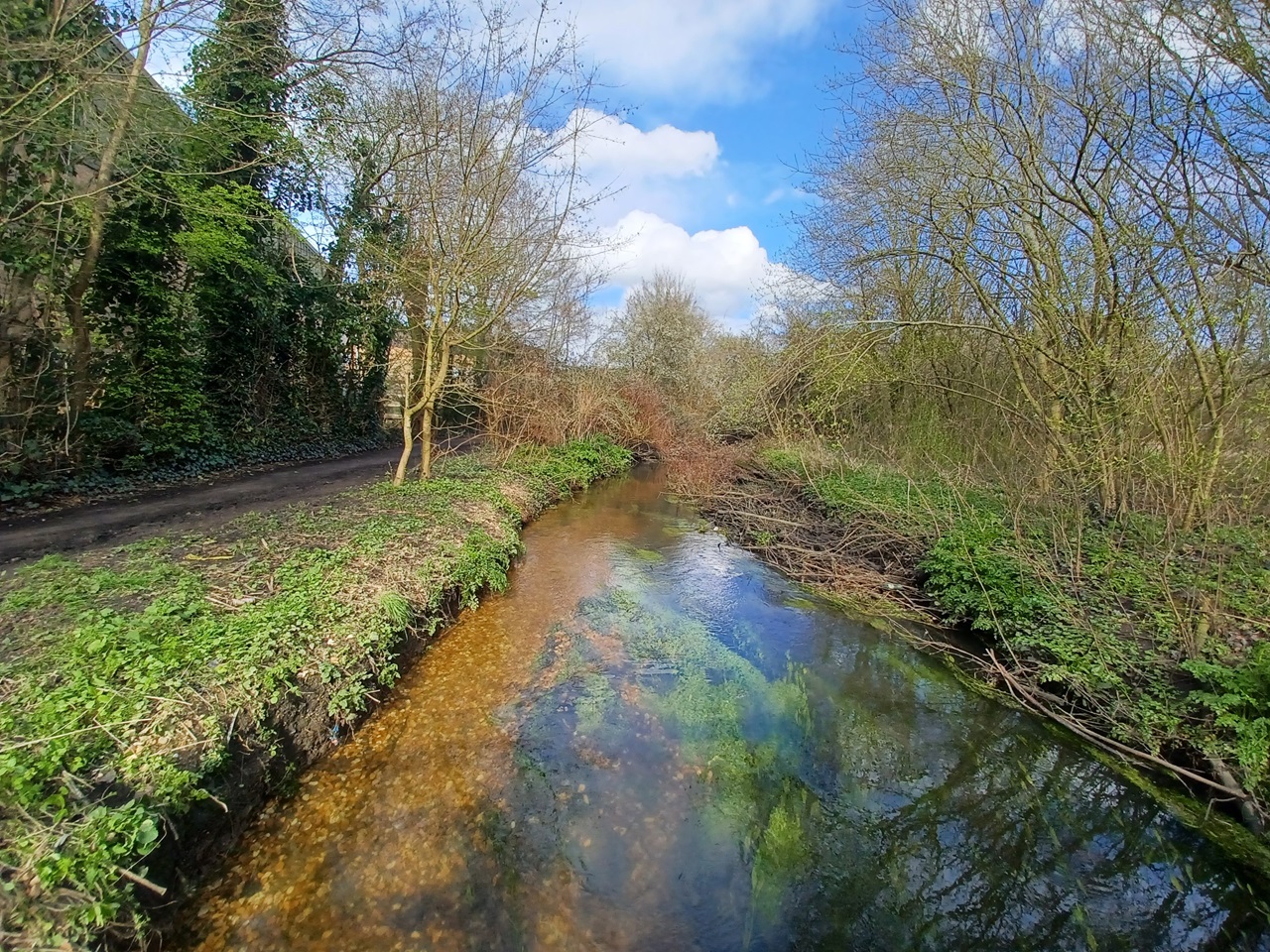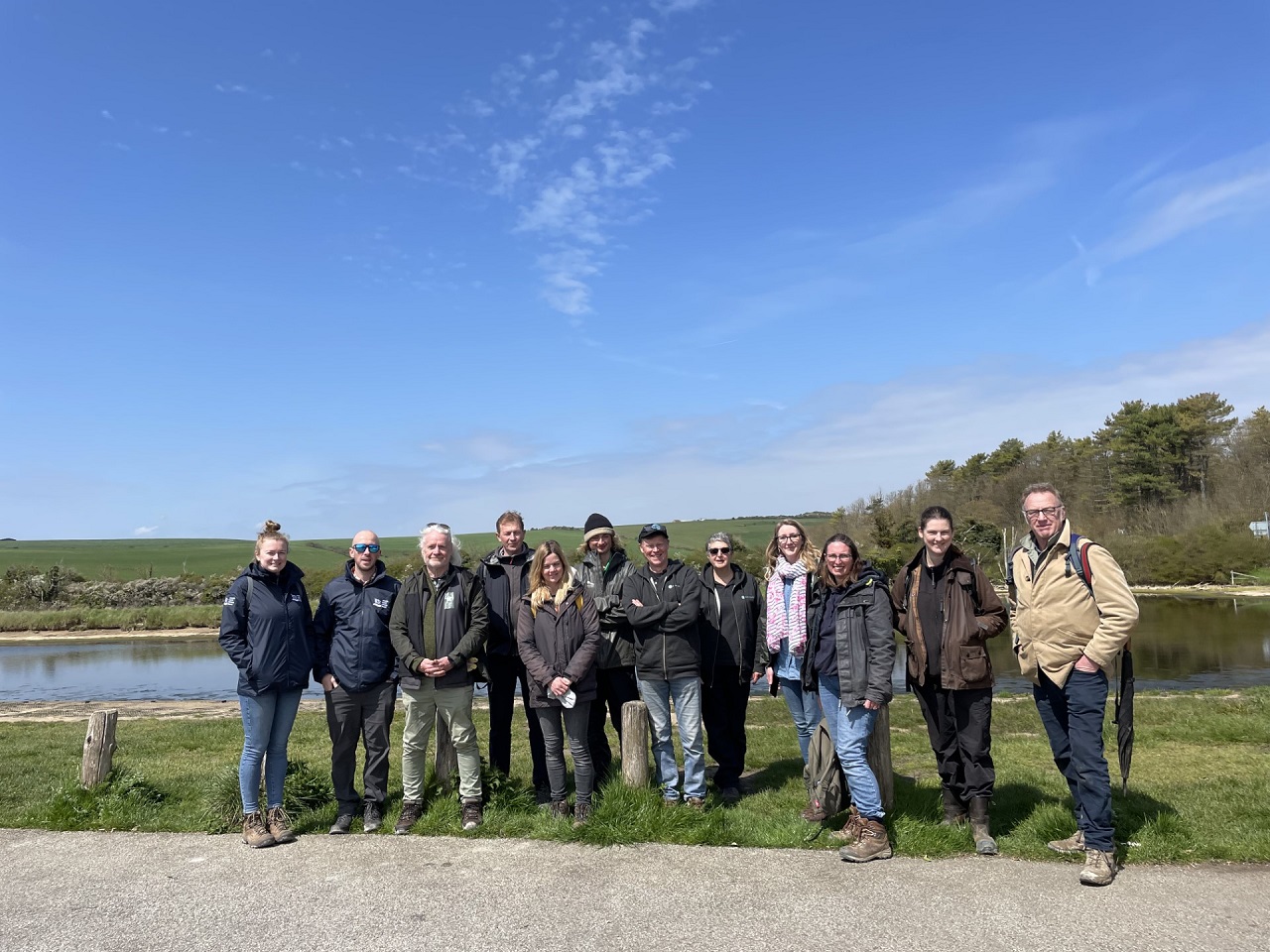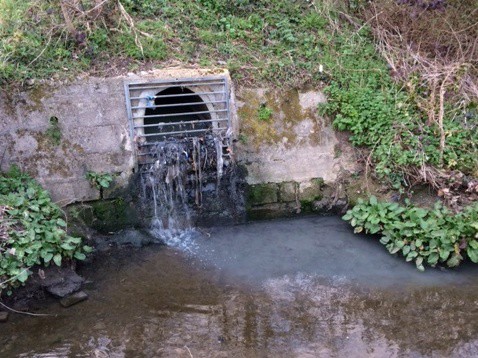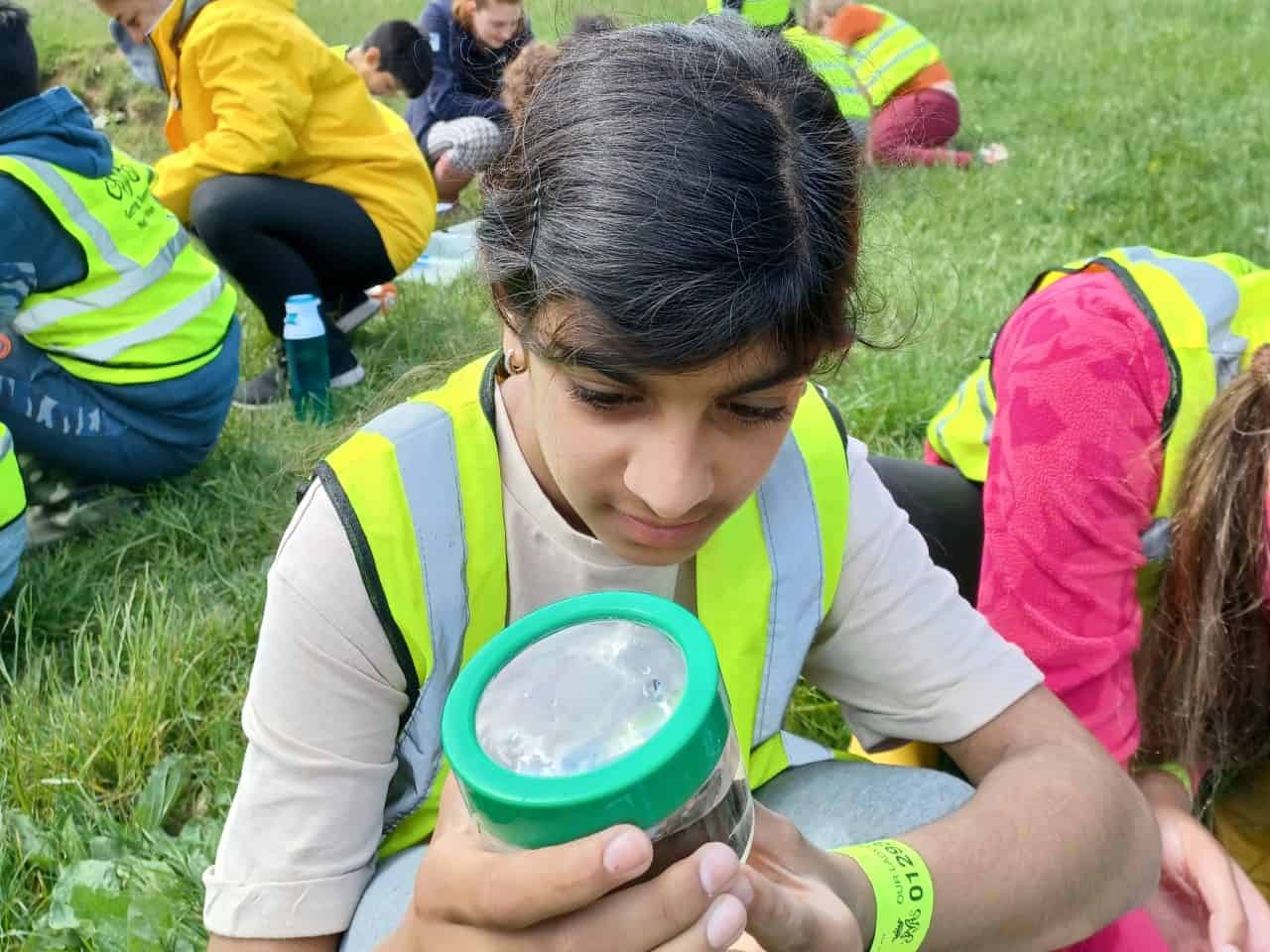Tag: Rivers
Gravel Seeding Works in Maidenbower, Crawley- River Mole
Activity Description:
The South East Rivers Trust would like your help with introducing gravels into the Stanford Brook and Gatwick Stream in Maidenbower, Crawley, both being tributaries of the River Mole. This work will be taking place throughout the week commencing 5th August 2024.
This is the first of many activities as part of our river restoration plan for the Upper Mole, and we are inviting the local communities to join us.
The newly seeded gravel will create riverbed features, such as pools and riffles, providing improved habitat for aquatic species. This habitat is essential for aquatic plants, invertebrates and fish as it offers refuge and spawning areas.
Volunteers will be putting on a pair of waders and gloves to move gravel into the river at designated spots, using shovels and wheelbarrows. We will then spread and rake the gravel along the riverbed.
This is a fantastic opportunity to help restore your local river for the benefit of nature and to meet new people!
Please be aware that this is a very physical activity and a minimum level of fitness is required. This activity may not be suitable for anyone with back pain or other musculoskeletal injury
All tools and equipment, inc. steel toed waders and gloves will be provided.
Meeting Point: Exact points to be confirmed
Day Plan:
0930: Arrive
1000: Wader up, Introduction, Health & Safety
1015: Gravel Seeding
1130: Tea/Coffee Break (provided by SERT)
1200: Gravel Seeding
1300: Lunch (not provided)
1345: Gravel Seeding
1530: Finish
What to Bring:
– Your own gardening gloves, if you prefer (note, they will likely get wet!) and your own boots/waders, though they would have to be steel toed for safety.
– Your own lunch
– Plenty of water, flask etc
– Appropriate outdoor clothing, extra layers and waterproofs
BOOKING ESSENTIAL – please RSVP using the button below and complete the form to secure your spot.
Booking for this event will close at: 1700 on Tuesday 6th August 2024
Minimum age 16 years old. 16 and 17 year olds will need to be accompanied by an over 18 year old throughout the day.
Please email volunteering@southeastriverstrust.org to:
- Find out more information,
- Cancel your space if you can no longer make it.
To read our Health and Safety Guidelines for this event please click HERE.
Photos and video footage will be taken at this event and used by the Trust for promotional purposes (including but not limited to printed materials, social media, newsletters and the website) and potentially shared with our external partners and funders. From time to time, external media agencies could also take photos, film or record our events.
The Trust’s lawful basis for processing this is “Legitimate Interests” under the General Data Protection Regulations. As an individual you have rights. If you wish for SERT to stop processing this data for you, please talk to a member of staff or email info@southeastriverstrust.org.
To read our Privacy Policy and see how we use and look after the information you provide when booking your spot at our events please click HERE.
Gravel Seeding Works in Maidenbower, Crawley- River Mole
Activity Description:
The South East Rivers Trust would like your help with introducing gravels into the Stanford Brook and Gatwick Stream in Maidenbower, Crawley, both being tributaries of the River Mole. This work will be taking place throughout the week commencing 5th August 2024.
This is the first of many activities as part of our river restoration plan for the Upper Mole, and we are inviting the local communities to join us.
The newly seeded gravel will create riverbed features, such as pools and riffles, providing improved habitat for aquatic species. This habitat is essential for aquatic plants, invertebrates and fish as it offers refuge and spawning areas.
Volunteers will be putting on a pair of waders and gloves to move gravel into the river at designated spots, using shovels and wheelbarrows. We will then spread and rake the gravel along the riverbed.
This is a fantastic opportunity to help restore your local river for the benefit of nature and to meet new people!
Please be aware that this is a very physical activity and a minimum level of fitness is required. This activity may not be suitable for anyone with back pain or other musculoskeletal injury
All tools and equipment, inc. steel toed waders and gloves will be provided.
Meeting Point: Exact points to be confirmed
Day Plan:
0930-1000: Arrive
1000: Wader up, Introduction, Health & Safety
1015: Gravel Seeding
1130: Tea/Coffee Break (provided by SERT)
1200: Gravel Seeding
1300: Lunch (not provided)
1345: Gravel Seeding
1530: Finish
What to Bring:
– Your own gardening gloves, if you prefer (note, they will likely get wet!) and your own boots/waders, though they would have to be steel toed for safety.
– Your own lunch
– Plenty of water, flask etc
– Appropriate outdoor clothing, extra layers and waterproofs
BOOKING ESSENTIAL – please RSVP using the button below and complete the form to secure your spot.
Booking for this event will close at: 1700 on Sunday 4th August 2024
Minimum age 16 years old. 16 and 17 year olds will need to be accompanied by an over 18 year old throughout the day.
Please email volunteering@southeastriverstrust.org to:
- Find out more information,
- Cancel your space if you can no longer make it.
To read our Health and Safety Guidelines for this event please click HERE.
Photos and video footage will be taken at this event and used by the Trust for promotional purposes (including but not limited to printed materials, social media, newsletters and the website) and potentially shared with our external partners and funders. From time to time, external media agencies could also take photos, film or record our events.
The Trust’s lawful basis for processing this is “Legitimate Interests” under the General Data Protection Regulations. As an individual you have rights. If you wish for SERT to stop processing this data for you, please talk to a member of staff or email info@southeastriverstrust.org.
To read our Privacy Policy and see how we use and look after the information you provide when booking your spot at our events please click HERE.
Protected: HP, DAS & RMRW Gravel Seeding Works in Maidenbower, Crawley- River Mole
Gravel Seeding Works in Maidenbower, Crawley- River Mole
Activity Description:
The South East Rivers Trust would like your help with introducing gravels into the Stanford Brook and Gatwick Stream in Maidenbower, Crawley, both being tributaries of the River Mole. This work will be taking place throughout the week commencing 5th August 2024.
This is the first of many activities as part of our river restoration plan for the Upper Mole, and we are inviting the local communities to join us.
The newly seeded gravel will create riverbed features, such as pools and riffles, providing improved habitat for aquatic species. This habitat is essential for aquatic plants, invertebrates and fish as it offers refuge and spawning areas.
Volunteers will be putting on a pair of waders and gloves to move gravel into the river at designated spots, using shovels and wheelbarrows. We will then spread and rake the gravel along the riverbed.
This is a fantastic opportunity to help restore your local river for the benefit of nature and to meet new people!
Please be aware that this is a very physical activity and a minimum level of fitness is required. This activity may not be suitable for anyone with back pain or other musculoskeletal injury
All tools and equipment, inc. steel toed waders and gloves will be provided.
Meeting Point: Exact points to be confirmed
Day Plan:
1200-1230: Arrive
1230: Wader up, Introduction, Health & Safety
1245: Gravel Seeding
1400: Tea/Coffee Break (provided by SERT)
1430: Gravel Seeding
1600: Finish 1600
What to Bring:
– Your own gardening gloves, if you prefer (note, they will likely get wet!) and your own boots/waders, though they would have to be steel toed for safety.
– Your own lunch
– Plenty of water, flask etc
– Appropriate outdoor clothing, extra layers and waterproofs
BOOKING ESSENTIAL – please RSVP using the button below and complete the form to secure your spot.
Booking for this event will close at: 1700 on Thursday 1st August 2024
Minimum age 16 years old. 16 and 17 year olds will need to be accompanied by an over 18 year old throughout the day.
Please email volunteering@southeastriverstrust.org to:
- Find out more information,
- Cancel your space if you can no longer make it.
To read our Health and Safety Guidelines for this event please click HERE.
Photos and video footage will be taken at this event and used by the Trust for promotional purposes (including but not limited to printed materials, social media, newsletters and the website) and potentially shared with our external partners and funders. From time to time, external media agencies could also take photos, film or record our events.
The Trust’s lawful basis for processing this is “Legitimate Interests” under the General Data Protection Regulations. As an individual you have rights. If you wish for SERT to stop processing this data for you, please talk to a member of staff or email info@southeastriverstrust.org.
To read our Privacy Policy and see how we use and look after the information you provide when booking your spot at our events please click HERE.
Dorking Balsam Bash – River Mole
Activity Description: Volunteer with us at Puddenhole and Castlefields in Dorking to help remove the invasive plant, Himalayan balsam, from the top of the banks of the River Mole.
Himalayan balsam is a big problem for river banks up and down the country. In addition to bringing competition for pollinators, this non-native invasive plant competes with native plants for light, nutrients and space, leading to an overall reduction in biodiversity. Moreover, the fact that the balsam dies back in the winter means that it leaves river banks bare and susceptible to erosion, and the dead leaves and stems can also cause blockages, which lead to flooding.
What’s more, each plant can produce up to 800 seeds per year – and one plant can propel copious amounts of that seed a distance of up to seven metres. This seed can spread considerably further if carried by the river, making it certain – if unchecked – to be more widespread year on year.
Meeting point: Meet on the fields down from the south side of Reigate Road A25, along from Hillier Garden Centre, Brockham, Dorking RH4 1NP, just over Deepdene Bridge, look out for the SERT Flag. Google map HERE
What to bring: Please wear appropriate clothes, long trousers and long sleeves and appropriate footwear. If it is hot, please bring a hat and sun cream. We will be only working from the banks of the river. We will provide tea, coffee and biscuits but please bring a bottle of water and a packed lunch.
BOOKING ESSENTIAL – please RSVP using the button below and complete the form to secure your spot. If the event is already fully booked then please sign yourself up to the waiting list and we’ll be in touch if a space becomes available.
Booking for this event will close at 5pm on Sunday 30th June 2024.
Please email volunteering@southeastriverstrust.org to:
- Find out more information
- Cancel your space if you can no longer make it.
To read our Health and Safety Guidelines for this event please click HERE.
Photos and video footage will be taken at this event and used by the Trust for promotional purposes (including but not limited to printed materials, social media, newsletters and the website) and potentially shared with our external partners and funders. From time to time, external media agencies could also take photos, film or record our events.
The Trust’s lawful basis for processing this is “Legitimate Interests” under the General Data Protection Regulations. As an individual you have rights. If you wish for SERT to stop processing this data for you, please talk to a member of staff or email info@southeastriverstrust.org.
To read our Privacy Policy and see how we use and look after the information you provide when booking your spot at our events please click HERE.
Community action kicks off Mending the Upper Mole
Engaging people with their local rivers is pivotal to the South East Rivers Trust’s mission to improve the health of our waterways. Communities that play a role in caring for their river are vital both in monitoring the river for signs of problems and for getting stuck in to help us fix them. Lewis Campbell, our Catchment Manager for the River Mole, reviews our recent community engagement events for the Mending the Upper Mole project and looks ahead to what we have lined up for 2024.
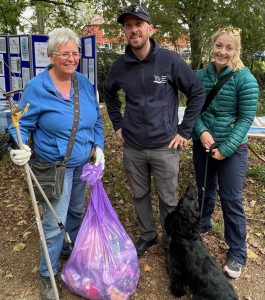
Managing the amount of litter that ends up in our urban rivers is incredibly important. The presence of unwanted rubbish not only spoils the aesthetics of our waterways but also has significant ecological implications for the health of our rivers, streams and even our oceans.
For example, discarded plastic can cause problems if it is ingested by wildlife, or it can break down into microplastics and pose a significant pollution risk.
As part of our Mending the Upper Mole project, we have recently been out and about with our wonderful volunteers removing litter from two tributaries of the River Mole.
On 24th September, which just happened to be World Rivers Day, we set up our gazebo on Riverside Gardens in Horley and invited the local community to join us in a bankside cleanup along the bank of the Gatwick Stream. We were joined by our friends from River Mole River Watch and Horley Town Council.
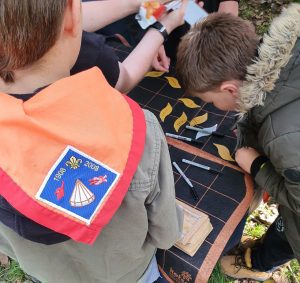
Alongside individual volunteers from the local community, we also welcomed a local scout group, whose members not only enjoyed making crafts on our stand but set about gathering up the litter with tremendous energy.
After a few hours of work, we had removed a huge amount of rubbish from the landscape. Items mainly consisted of plastic bottles, drinks cans and food packaging. A shopping trolley and car tyre were among larger items.
Following the success of our Horley event, on 11th October we went south and hosted a group of enthusiastic volunteers for a clean-up along the Stanford Brook and its banks in Crawley. This time we were able to get into the river itself.
Looking in from the riverbank, the waterway looked relatively clean. Once we entered the water, however, the scale of the litter problem became clear: there was a lot of rubbish on the river bed which had clearly been there a long time. We collected large amounts of food wrappers and drinks cans and bottles. We also picked out three more shopping trolleys and the base of a vacuum cleaner.
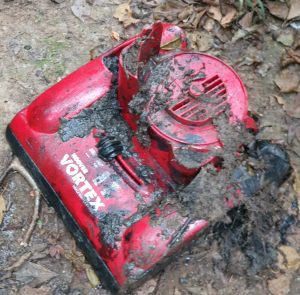
I’d like to extend a massive thank you to all who came and helped out at both events. To those who took part, the experience really emphasised the scale of the issue affecting our waterways: we can’t always see the extent of the damage being caused to our rivers, because much of it sinks to the bottom. Creatures in the river will try to feed on items such as plastic, while the larger items that we can see are an eyesore on cherished public spaces.
Besides tidying up our rivers, these events are also a great opportunity to engage with local people about our plans to improve the health of the waterways of the Upper Mole, around Horley, Crawley and neighbouring areas.
Back in 2017, a pollution event significantly impacted the health of the Upper Mole catchment. The South East Rivers Trust was given funding to deliver an ambitious suite of projects in order to improve the ability of the catchment to cope with such events in the future. These delivery projects will include removing barriers to fish passage, like the projects we have delivered on the Darent and Loddon, improving the quality of the river habitat, such as we have done on the Wandle, and creating wildlife refuges.
We will also work with schools and community groups in the Upper Mole to raise awareness of local rivers and to encourage engagement. Another aspect is to conduct citizen science to better understand how poor water quality is impacting the rivers and their wildlife, to help us form action plans to improve the river’s health. All of these projects come together to form what we have called the Mending the Upper Mole project.
We hope that 2024 will be the year when much of this work kicks off in earnest. A great appetite has already been shown not only by the volunteers who have turned up at our events, but by community leaders and conservation groups who are all keen to help.
There will be ample opportunities to get involved, whether you want to come and help us pick litter, clear overgrown river banks, take water samples, or all of the above. You can keep in touch with opportunities by bookmarking our events page, by signing up to SERT’s mailing list to receive our monthly newsletter or for direct enquiries email info@southeastriverstrust.org.
To learn about our Key Stage 1 and 2 sessions for primary schools on the Gatwick Stream at Grattons Park, visit our education page and read the Our River Our Water section.
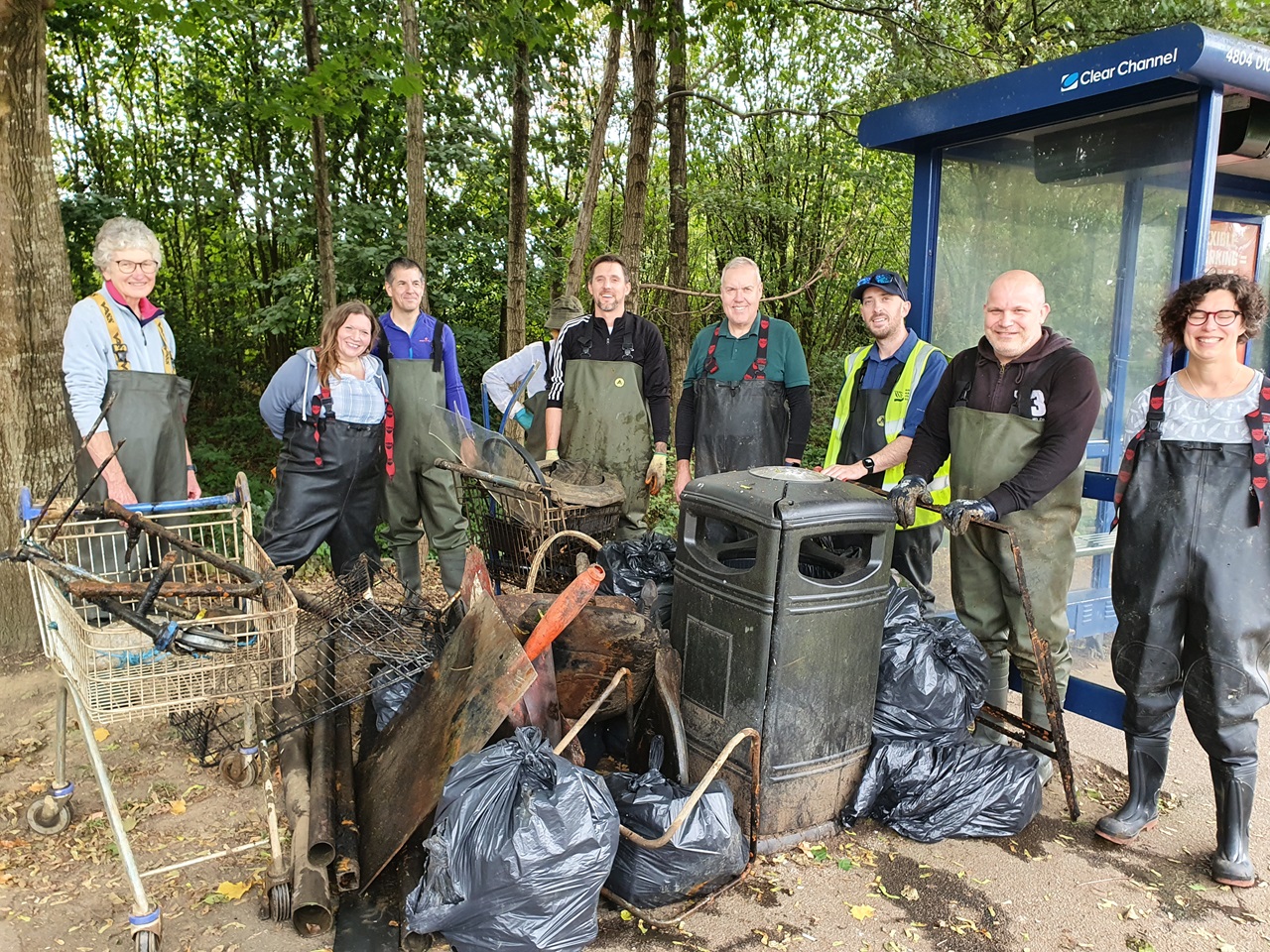
A week in the life of a catchment officer
Have you ever wondered what it’s like to be a catchment officer? What is it exactly they do? The South East Rivers Trust’s catchment officer for the Loddon River catchment, Lou Sykes, takes us through a typical week; from admin tasks to going out and assessing the state of sections of rivers with partners, to plan improvements.
Hopefully Lou’s insights below will give you a flavour of what to expect in our two current vacancies for Catchment Officer and Catchment Manager. These roles have various aspects to them and have at their heart a desire to help rivers thrive by improving biodiversity, for both wildlife and people.
Lou says: “My job in its simplest form? I host Catchment Partnerships, meaning I chair meetings of different stakeholders with a geographical common interest in a particular collection of rivers which make up one named network. In my case, one of these is the River Loddon and another the Cuckmere & Pevensey Levels.
“The external partners in a partnership could be water companies, the Environment Agency and Natural England, environmental NGOs, community flood groups, local councils, fishing groups. All of them have an interest in improving the health of the river. Collectively, we want to improve and maintain the health of the river network as a whole, not just treat sections in isolation.
“As detailed on our Catchment Partnerships page, this method is guided by the national Catchment Based Approach (CaBA). Every catchment partnership is different, and this is why they work so well: you can tailor them to your patch and work on the specific needs of that river system.”
Monday
Typically, this is a working from home day. I start with a morning catch up with the Science and Partnerships team before going through my emails. I complete admin tasks such as writing minutes from a Catchment Partnership meeting I hosted recently, then send off a few emails for events and activities planned for later in the week.
Tuesday
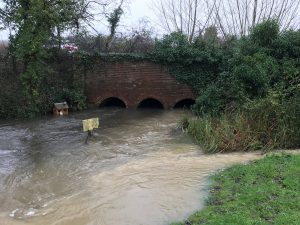
Today I was involved producing a statement piece that provides a holistic view on the water quality of the river.
This included information gathering on legal and illegal discharges into rivers, drinking water standard breaches and citizen scientist data collection.
We have been working with local MPs who have a keen interest in their local river and want to work with citizen scientists – members of the public who volunteer for tasks in their spare time.
Through them we want to understand the current state of the water quality and investigate ways that we can monitor and make improvements.
Wednesday
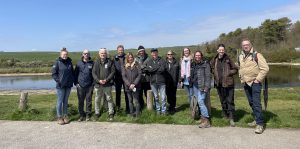
Catchment Partnership meeting day! These happen quarterly and it was exciting to have our first one in-person, post-COVID. Typically, our meetings have themes – this one focused on looking at emerging water company plans as they go through their next phase of business planning for both their Water Industry National Environment Programme (known as WINEPs) and their Water Resources Management Plans (WRMPs).
Other topics at meetings can vary from looking at biodiversity and wildlife (both native and invasive species) to investigating ideas for tearing up a weir that is acting as a barrier to fish who need to move between different sections of river to find the best feeding and breeding grounds.
By engaging many different parties in this collaborative format, we are providing the opportunity for community groups, government bodies and water companies to come together and form common goals to help rivers thrive. This is particularly important as it allows us to look at the area in a ‘big picture’ format because in every river system, what happens upstream impacts the downstream area.
Thursday
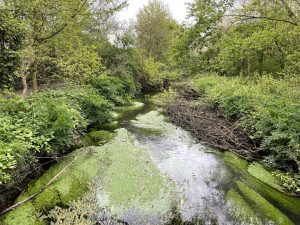
This was a strategic day of investigating new funding opportunities that could be available for research, project development and delivery – the on-the-ground restoration work that will improve rivers for wildlife and as places people can enjoy. Being a project-funded organisation means we are constantly looking for funding opportunities. We might be looking to “rewiggle” – or remeander – a straightened river. We might want to help fish connect to different parts of a river network by removing man-made, historical objects such as weirs, as we have done at Acacia Hall, Dartford, or by installing eel or fish passes, like we have done further along the Darent. We might be wanting to look to create backwaters to increase biodiversity and mitigate against potential flooding. For one such example, read about Charvil Meadows, on our Loddon Storymap (in the “Action plan” section under “case studies”).
All this work requires funding, and the co-operation of landowners and other interested groups to make it happen, so the over-riding strategy has to look at prioritisation to improve the whole catchment. On this particular week, I also got out to meet and continue to develop a relationship with one of the key stakeholders on my patch. These meetings are some of the most vital parts of my job. Time and resource in every environmental job is a stretch and collaborative working is the key to keeping everything on track.
I finished off the day with a catch up of our Catchment Officers team at SERT. We are constantly evolving and working out ways that we can work more efficiently, working together so that we are not reinventing the wheel every time something new crops up.
Friday
A large part of my job also involves putting on a pair of wellies, getting out on site and identifying opportunities in the catchment for improving stretches of river or their surrounding land.
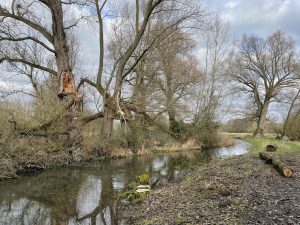
On this particular Friday, I walked three miles up the River Lyde – one of the tributaries of the River Loddon – with members of a local fishing club. They were looking at how they could possibly manage the river for both their fishing club members and to keep the waterway as healthy as possible. This stretch of river is a chalk stream, so we would like the water to be clear, with clean gravel, plenty of underwater plants and a decent buffer of green on the banks. Chalk streams are globally rare habitat with only about 200 of them left in the world, 160 of which are in the UK.
Pleasingly on this day, on this river, a healthy amount of aquatic plant growth was evident and there was a good amount of shade and light getting to the channel. However, it could do with some habitat or restoration work to help mitigate erosions on some stretches.
Not every week looks exactly like this, but this is an average one. There will be weeks where there is more home working, the odd day in our HQ office in Leatherhead in Surrey, or you could end up hosting a week of volunteer events that put you in a pair of waders all week, such as during Loddon Rivers Week held annually in September.
This is the beauty of being a catchment officer or manager – it’s varied nature keeps you on your toes and gives very little opportunity for burn out from doing the same thing over and over again.
- The South East Rivers Trust currently has two positions available, one for Catchment Officer and another for Catchment Manager, which has line management and team development responsibilities on top. Take a look at our job opportunities page for full details and apply by 26th June.
Volunteers needed for Outfall Safaris this spring
Do you see drains – known as outfalls – spilling pollution into rivers when out on riverside walks? Do you know why this happens and would you like to help sort out the problem?
Our rivers should be healthy spaces for wildlife, but need protecting from many forms of pollution. One of them is household plumbing that is misconnected, meaning that foul water goes straight into the waterways through drains that should be connected to the sewage system.
This spring, river lovers along the Wandle and the Cray and Shuttle are being given the chance to train as citizen scientists to help rectify the problem in the latest roll out of the Outfall Safari programme.
Seven reasons to put the local river on your school’s curriculum
Jonathan Dean, our Education Development Officer, plays a central role in developing and delivering the Trust’s education strategy. He oversees our formal education work, extending across all our catchments. Here, he shares his thoughts on why rivers should be an important part of the curriculum for any school in the south east of England.

